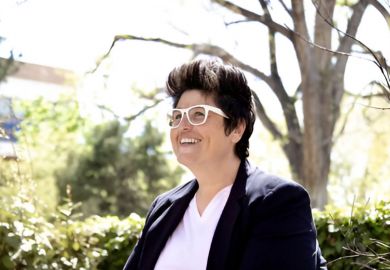US policymakers, funders and academics are making several new attempts to improve diversity in the sciences, stung by decades of failure to meaningfully confront the field’s white male culture.
Two of the coming initiatives are information-gathering exercises. One, by the National Academies of Sciences, will convene an expert panel to assess racial barriers in the sciences and suggest ways to overcome them. Another, by the White House, is asking the general public to offer solutions.
A third is led by the Howard Hughes Medical Institute (HHMI), the nation’s leading private funder of medical research, which is taking more immediate action. HHMI is pledging $2 billion (£1.4 billion) over 10 years, largely in the form of teaching its elite corps of academic research stars to become much better at guiding their younger minority colleagues.
“It’s time to get real about this work,” said David Asai, the senior director for science education at HHMI, whose 300 institute-funded researchers are regarded as the stars of their disciplines.
New studies such as the National Academies effort are welcome and could bring valuable insights, Dr Asai said. At the same time, he continued, it has become abundantly clear that cultural factors loom as the most significant obstacle to greater racial equity in the sciences, and HHMI feels that it has the experience to expand its initial work in mentoring throughout its operations.
HHMI is best known for its corps of investigators – the 300 university-based scientists working with about $1 million a year in the foundation’s money, often for a decade or more, to pursue projects with broad latitude in direction. The method regularly produces Nobel prizes, including this year’s medicine laureate Ardem Patapoutian.
Yet HHMI also struggles with diversity. Black scientists accounted for only two of the 33 new investigators the foundation announced last month. More broadly, minorities represent only about 7 per cent of tenured and tenure-track US university faculty in the life sciences, despite earning about 14 per cent of the biology doctorates.
All 300-plus HHMI investigators are part of the overall group – including the institute’s own research scientists – that will now be expected to take part in training to learn how to be better mentors to young scientists of diverse backgrounds, Dr Asai said.
That will include becoming more aware of what types of comments can be taken as offensive, Dr Asai explained. “Those can be uncomfortable conversations, even for the most well-intended,” he said of white mentors with minority junior colleagues. “So you have to practise; you have to learn some of the skills.”
The bulk of HHMI’s $2 billion investment will be spent on a new initiative that will help to finance the research careers of 125 young scientists, of various racial backgrounds, who have demonstrated a commitment to advancing equity in science.
The National Academies expert panel, in the process of being formed now, will be asked to compile research on the ways that racism hinders minority careers in the sciences, and the ways that it can be confronted through cultural change within organisations.
The White House effort is being run by its Office of Science and Technology Policy, which is using the government’s Challenge.Gov website to invite all Americans to submit “their own thoughts, ideas or examples of existing or promising actions that expand equity and inclusion”.
Register to continue
Why register?
- Registration is free and only takes a moment
- Once registered, you can read 3 articles a month
- Sign up for our newsletter
Subscribe
Or subscribe for unlimited access to:
- Unlimited access to news, views, insights & reviews
- Digital editions
- Digital access to THE’s university and college rankings analysis
Already registered or a current subscriber?








